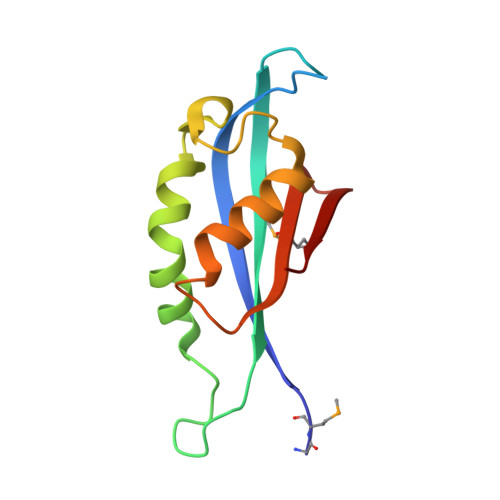Biochemical and Structural Studies of 6-Carboxy-5,6,7,8-tetrahydropterin Synthase Reveal the Molecular Basis of Catalytic Promiscuity within the Tunnel-fold Superfamily.
Miles, Z.D., Roberts, S.A., McCarty, R.M., Bandarian, V.(2014) J Biological Chem 289: 23641-23652
- PubMed: 24990950
- DOI: https://doi.org/10.1074/jbc.M114.555680
- Primary Citation of Related Structures:
4NTK, 4NTM, 4NTN - PubMed Abstract:
6-Pyruvoyltetrahydropterin synthase (PTPS) homologs in both mammals and bacteria catalyze distinct reactions using the same 7,8-dihydroneopterin triphosphate substrate. The mammalian enzyme converts 7,8-dihydroneopterin triphosphate to 6-pyruvoyltetrahydropterin, whereas the bacterial enzyme catalyzes the formation of 6-carboxy-5,6,7,8-tetrahydropterin. To understand the basis for the differential activities we determined the crystal structure of a bacterial PTPS homolog in the presence and absence of various ligands. Comparison to mammalian structures revealed that although the active sites are nearly structurally identical, the bacterial enzyme houses a His/Asp dyad that is absent from the mammalian protein. Steady state and time-resolved kinetic analysis of the reaction catalyzed by the bacterial homolog revealed that these residues are responsible for the catalytic divergence. This study demonstrates how small variations in the active site can lead to the emergence of new functions in existing protein folds.
- From the Department of Chemistry and Biochemistry, University of Arizona, Tucson, Arizona 85721.
Organizational Affiliation:



















